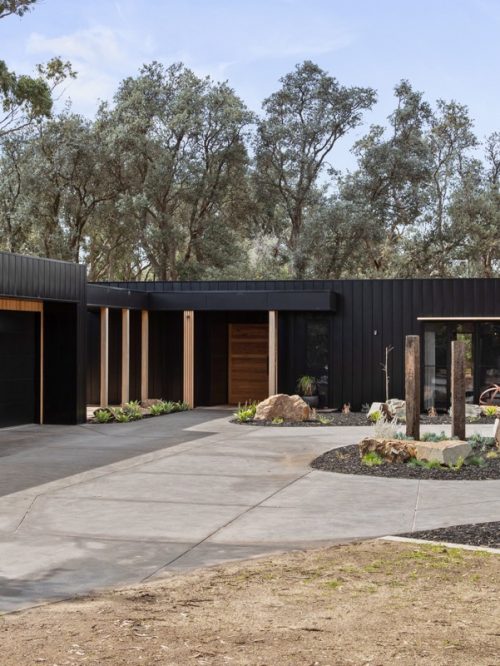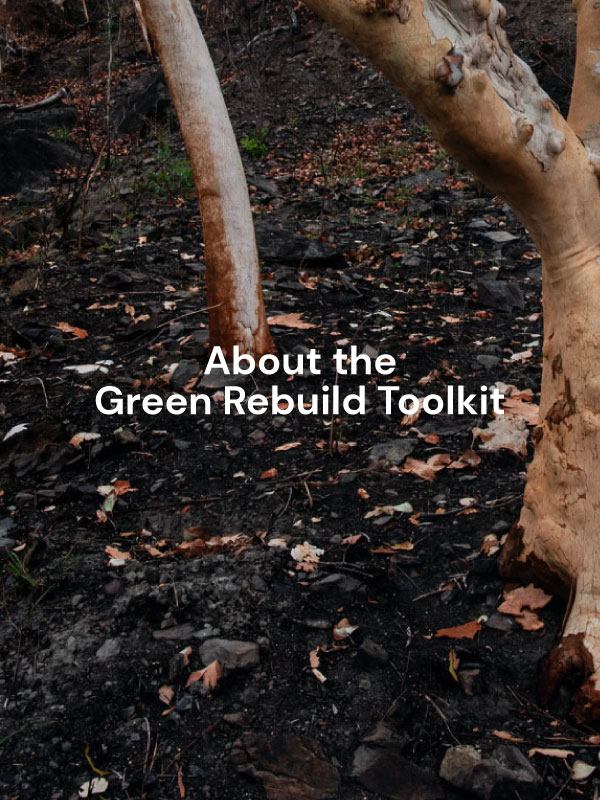To turn a great design into a high-performing sustainable house, you need the right builder. Jenny Edwards explains where to look and what to ask.
So you want to build the sustainable, energy-efficient home of your dreams or renovate your place to make it more liveable and better performing. Perhaps you’ve already got a design you love. What next? How do you find a builder who will understand your values and deliver the kind of home that you want?
Choose a designer first
No builder, on their own, is the complete solution to getting a great home. Their job is to turn a house design into reality, although a great builder does a lot more than interpret and action the plans and specs. They pay attention to detail, infer where detail is lacking and may solve myriad problems that the designer didn’t cover. A huge part of their expertise is project managing: understanding and scheduling what needs to happen when and how it should be done. But the point still stands. A builder’s expertise is building, so if you want a great, sustainable, energy-efficient house, the first person you should seek is not a builder, but a designer.
Be aware that there are big differences in qualifications between architects, building designers and draftspeople. All three of these professions will produce building plans, but they vary enormously in their contribution to the design.
The role of a draftsperson is to turn a proposed floor plan into accurate approvable drawings that a builder can implement. Building designers are trained in design, although the amount of training varies from state to state, whereas architects are design specialists who can only become licensed after a minimum of five years at university and two years in industry.
Some builders set themselves up as ‘design-build’ businesses. When considering these firms, look carefully at the quality of the design side of the business and ask whether they have any employees with qualifications in design. What local houses have they designed? Find out whether you can visit one, or at least learn if they’re aligned with the kind of home you want.
Listen to your designer’s suggestions about builders
If you’re working with a designer – whether an architect or building designer – they will already have builders who they prefer to use; they will have seen the construction of many houses before yours and understand the local market.
They know which builders are good, or good value for money, or keen for work, or easy to work with, or interested in sustainable housing. This expertise of an architect is often overlooked, so make the most of it.
Be upfront about your values
Let the prospective builder know that you are interested in energy efficiency and that you want a high-performing home. Tell them that you’re not interested in a 6 Star house, but that you want 7 or 8 Stars and listen to their response. In our experience, good builders are good communicators who enjoy helping their clients achieve a great result. If a builder immediately tries to talk you out of going above the minimum standard and suggests it’s not a good investment, move on.
Check out builders with ‘green’ accreditation
The Housing Industry Association (HIA) and Master Builders Association (MBA) both provide optional two-day ‘green’ training courses for their members that provide a broad overview and understanding of sustainable construction methods and materials.
This can be a useful starting point in selecting a builder. Note, however, that it is not essential; there are many builders with experience and a genuine interest in sustainability who may not have done either of these courses. Conversely, completion of one of these courses doesn’t guarantee that a builder is an expert in sustainability, but it does indicate that it’s something they are interested in and have spent some time thinking about.
Check out the websites of your state’s or territory’s HIA and MBA branch for a list of the builders who are accredited in their GreenSmart and Green Living programs, respectively.
Willingness to learn is a plus
Whether or not they are GreenSmart or Green Living accredited, having an interest in sustainability and being willing to try new approaches is a must.
Don’t dismiss a young, smart builder with a passion for sustainability. Everybody has to start somewhere and some younger builders have chosen their trade because of a particular interest in environmental issues. They still need to demonstrate relevant experience, though. Builders generally learn via apprenticeship, so you can start by checking that their education was with a good builder.
EXPERT FEATURE
Words: Jenny Edwards
First published in Sanctuary 48
Good builders are good communicators who enjoy helping their clients achieve a great result; they should be happy to answer your questions.
Track record matters
Look at a builder’s track record. How many years have they been in operation? How many houses have they successfully built? Can you visit any? Will they provide contact details for previous clients?
Also, do they typically build the kind of house you are interested in? If you’re interested in smart and sustainable, a builder who churns out McMansions or low-quality project homes is unlikely to be the right match for you. If the price seems too good to be true, there is usually a reason.
If they are a young builder you can still ask to see examples of their work – this may be work done as a carpenter working for another builder. A good builder will be proud to show you their work.
Awards
Look at which builders have had projects win awards from your local industry organisations. The main awards are those of the MBA, the HIA and the Australian Institute of Architects (AIA). Also worth checking out are the Sustainability Awards run by Architecture & Design magazine. Wins in any of these are a plus, particularly in their sustainability categories.
Go local
Local designers and builders are usually preferable to ones from out of town, even if the out-of-towner is excellent. Locals will have connections to local trades and suppliers and understand how the local approvals processes work. They know where to go, who to talk to and who to avoid. Don’t underestimate what an advantage this is.
Word of mouth (and word of media)
The most powerful insight you can get into the quality of a business is what other people with similar values are saying about it. Ask among like-minded people and check out stories in Sanctuary, Renew and other magazines.
Visit the homes that open their doors for events such as Renew’s national Sustainable House Day and the AIA’s Solar House Day in Canberra, or other local community group open home events. Find out who built them.
Who has worked for ‘green’ developments?
If you live near housing developments that follow green principles, like The Cape and Mullum Creek in Victoria and Currumbin Eco Village in Queensland, these can provide useful information. Find out which builders are on their preferred suppliers list: they will have been identified and vetted by the development in question, saving you from having to go through the same process yourself.
Professionalism and contracts
Watch out for the super-friendly, casual builder who has a relaxed ‘she’ll be right’ attitude. These days it’s not acceptable for a builder to just be good at building. You are trusting them to deliver probably the biggest purchase of your life and they should be skilled and organised project managers with good administration systems who respect the necessary formality in such a big undertaking. Check that their construction licence and insurances are current.
Whenever you engage a builder to construct a house there should be a comprehensive contract that all parties sign. The detailed plans and specification for the home make up an important part of this contract documentation. Don’t sign a contract without reading it carefully first and ensuring you understand it – what’s included, what’s excluded and who is responsible for what. You may wish to seek legal advice at this stage.
Watch out for things like excluding standard clauses from the contract (such as liquidated damages, where the builder compensates you if they run over schedule) and including provisional sums for items where a quote can be obtained and a fixed sum put in the contract price. Provisional sums are all opportunities for price variation during the build.
Get an energy assessment early
To get approval to build your house design you will need to demonstrate that it meets the provisions of the National Construction Code. All licensed builders should be across these requirements, but they may not be familiar with how best to exceed the minimum standards for energy efficiency, which will no doubt be a priority in your new sustainable home!
In most states an accredited energy assessor will need to model your house design in National Home Energy Rating Scheme (NatHERS) thermal performance software to show that it achieves a rating of 6 Stars or more. (Even if this is not required in your state you can still get assistance from an energy assessor to optimise the energy efficiency of your design.)
Some builders, and most designers, will not have this done until the end of the design process when they are seeking building approval from your local council; they may not involve you. However, NatHERS software is an excellent design tool and an experienced energy assessor with an interest in sustainability can provide incredibly useful advice during the design stage, which is the cheapest and easiest time to make changes to increase your Star rating. Things like maximising your passive solar gain in winter, and getting your window and eave sizes right, don’t result in increased building costs but they most certainly result in reduced running costs. Lifting your rating from 6 to 7 Stars equates to around a 30% reduction in predicted energy use per square metre for heating and cooling; an 8 Star design is predicted to need only half the energy of a 6 Star design of the same size. (See ‘Star-stuck? How to make the most of house energy ratings’ in Sanctuary 44 for more.)
Wrapping up
A concluding word from our own experience: Light House Architecture and Science has worked with a wide variety of builders on over 80 projects across Canberra. Some are very experienced; others are just starting out. Some have won multiple awards and others are yet to win their first. Some have done the MBA or HIA ‘green’ building courses, while others don’t have a certificate but do have a wealth of knowledge because they are highly self-motivated learners.
What do they all have in common? They all went through and passed our informal interview process. We met with them to discuss our values and approach and how it aligns with their own, and to give them an opportunity to ask us any questions. We asked to see examples of their work and for names of previous clients.
They are all good communicators who see the design and construction of a home as a team effort between designer, energy assessor, builder and client. They are all determined to deliver a high-quality product.
Your builder will be working on a very important and expensive project for you for several months, so interview them thoroughly. A good builder will be able to answer any questions you have. There are plenty of good builders out there. If you want quality, don’t select based just on price.











